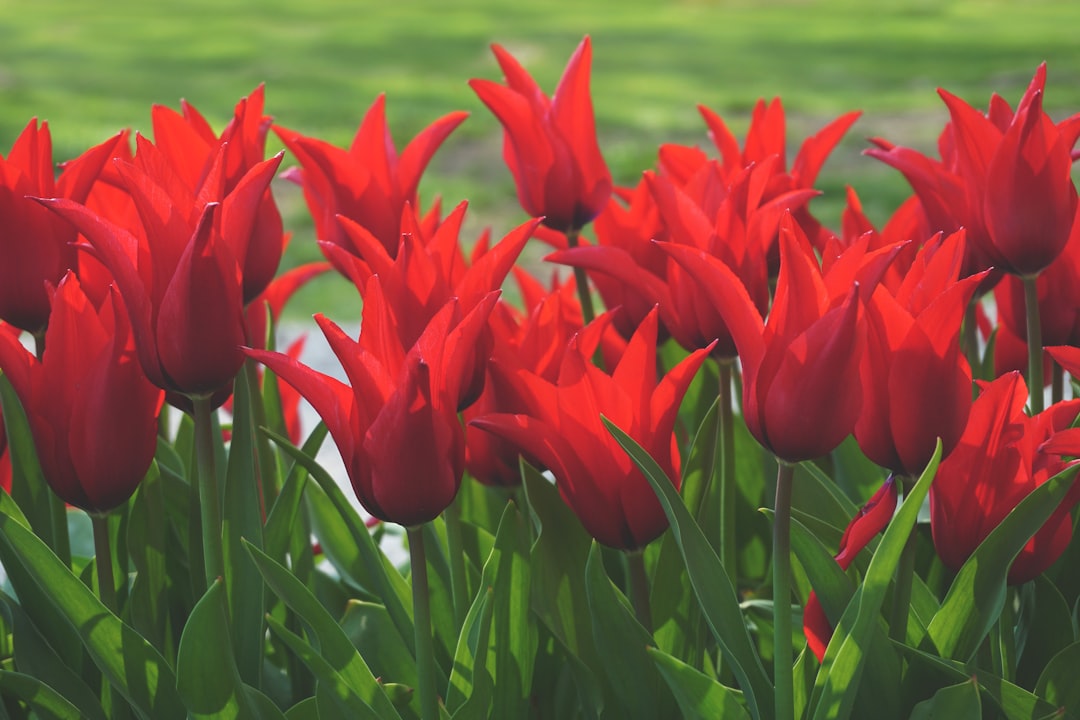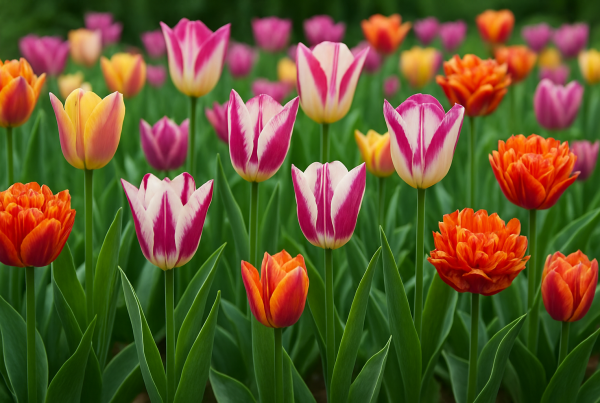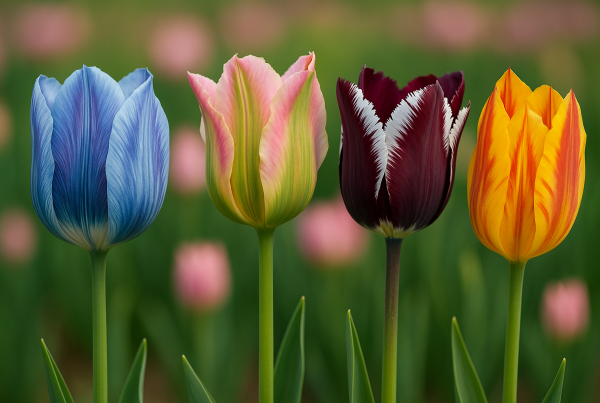Exploring the Rich History of Tulips: From Wildflower Origins to European Elegance
Tulips, with their vibrant colors and elegant shapes, have a fascinating history that traces back to their wildflower origins in Central Asia. Over time, these captivating blooms journeyed across continents, eventually becoming a symbol of European elegance and sophistication during the famed Tulip Mania of the 17th century. This exploration into the rich history of tulips will uncover how these flowers transitioned from wild specimens to cultivated beauties, cherished by gardeners and enthusiasts worldwide. As we delve into the various tulip species and their scientific classifications, we will also highlight their cultural significance and the diverse ways they can be incorporated into modern gardens. Join us on this captivating journey to discover where tulips are found in the world and how they continue to inspire gardeners with their timeless allure.
Origins of Tulips
Wildflower Beginnings
Tulips began their journey as wildflowers in the rugged terrains of Central Asia, where they first caught the attention of nature enthusiasts. These early tulips flourished in the harsh climates typical of the mountainous regions, showcasing their resilience and adaptability. The scientific name for tulips, Tulipa, belongs to the family Liliaceae, which includes other notable species like lilies and onions. As travelers and traders moved across the Silk Road, they marveled at these vibrant blooms, bringing back tales and specimens to share with their own cultures. This migration of tulips set the stage for their eventual introduction to Europe. The history of a tulip’s journey from a humble wildflower to a symbol of wealth and luxury is a testament to the flower’s enduring charm and adaptability. Understanding where tulips are found in the world today starts with appreciating these ancient roots.
Tulip Scientific Name and Family
The tulip’s scientific name, Tulipa, places it within the Liliaceae family, a diverse group that includes over 100 species. This family features a variety of plants known for their striking flowers and bulbous nature. Tulips, in particular, have evolved over centuries, adapting to different environments, which has led to a wide range of tulip species. Each species boasts unique characteristics, from the classic cup-shaped flowers to more exotic forms with fringed or double petals. The scientific classification of tulips helps gardeners and horticulturists understand their growth habits, preferred conditions, and potential for hybridization. This knowledge is crucial for cultivating these plants successfully in gardens worldwide. Understanding the tulip scientific name and family not only enriches our appreciation of their beauty but also aids in preserving their diverse genetic heritage. This foundational knowledge lays the groundwork for exploring the broader history of tulips in Europe and beyond.
Where Are Tulips Found in the World
Today, tulips are found in diverse regions across the globe, from their native Central Asia to gardens in Europe, North America, and beyond. Initially, tulips spread westward from Central Asia through the actions of traders and explorers, who marveled at their vibrant blooms. The Ottoman Empire played a significant role in cultivating tulips, eventually introducing them to the Dutch, who embraced them wholeheartedly. This introduction sparked the infamous Tulip Mania in the 17th century, cementing tulips’ status in European horticulture. Now, tulips flourish in climates ranging from the temperate zones of the Netherlands to the varied environments of North America and even parts of Australia. Each region has its own preferred species and cultivars, adapted to local growing conditions. Understanding where tulips are found in the world highlights their incredible adaptability and the universal appeal of these timeless flowers. Whether in meticulously curated gardens or wildflower meadows, tulips continue to captivate admirers globally.
Tulips in European History
History of Tulips in Europe
The history of tulips in Europe is a tale of fascination and financial frenzy. Tulips first arrived in Europe through the Ottoman Empire, capturing the imagination of botanists and the elite. By the late 16th century, tulips were flourishing in the gardens of affluent Europeans, but it was the Dutch who truly embraced them. This led to Tulip Mania in the 1630s, a period when tulip bulbs became so coveted that they were traded like modern-day stocks. Prices skyrocketed to the point where a single bulb could cost more than a house. However, the bubble burst, leaving a lasting impact on economic history. Despite the economic upheaval, tulips remained a beloved symbol of beauty and sophistication in Europe. Today, the Netherlands is synonymous with tulips, producing billions of bulbs each year. This rich history underscores the tulip’s enduring allure and its significant cultural footprint across the continent.
Tulip Species and Varieties
Europe’s fascination with tulips led to an explosion of tulip species and varieties. Botanists and gardeners worked tirelessly to cultivate new forms, resulting in a stunning array of colors, shapes, and sizes. Today, there are over 3,000 registered varieties of tulips, divided into 15 official groups by flower type and blooming period. Some popular groups include the single early tulips, known for their simple and elegant blooms, and the exotic-looking parrot tulips, with their fringed and ruffled petals. The Darwin hybrids are celebrated for their large, vibrant flowers and robust nature, making them a favorite for spring gardens. Additionally, rare and unique varieties, such as the black tulip ‘Queen of Night,’ continue to captivate enthusiasts. This diversity allows gardeners to create dynamic and personalized landscapes. Exploring tulip species and varieties offers a glimpse into the creativity and dedication that has shaped these beloved flowers over centuries.
Cultural Significance of Tulips
Symbolism Through the Ages
Tulips have held deep symbolic meanings through the ages, transcending cultures and time periods. In the Ottoman Empire, tulips were associated with paradise on earth and became a symbol of abundance and indulgence. The flower’s unique shape and vibrant colors made it a favorite motif in art and textiles. During the Dutch Golden Age, tulips symbolized wealth, beauty, and the ephemeral nature of life, reflected in the still-life paintings of the era. In modern times, tulips are often seen as a symbol of love and renewal, making them a popular choice for springtime celebrations like Easter and Mother’s Day. Different colors of tulips carry distinct meanings: red tulips symbolize true love, yellow tulips represent cheerful thoughts, and white tulips are often used to convey forgiveness. This rich tapestry of symbolism ensures that tulips remain a timeless and meaningful flower, cherished by many across the globe.
Tulips in Art and Literature
Tulips have long inspired artists and writers, leaving a vibrant mark on art and literature. During the Dutch Golden Age, tulips featured prominently in still-life paintings, symbolizing beauty and the fleeting nature of life. Artists like Rembrandt and Jan Brueghel the Elder captured their delicate forms and vivid hues, creating works that celebrated both the flower’s aesthetic and symbolic significance. In literature, tulips have often been used as motifs of desire and beauty. In the poetry of the Persian mystic Rumi, tulips are celebrated for their grace and resilience. More recently, tulips have appeared in modern novels and poems, where they are used to explore themes of love, renewal, and transience. This enduring presence in various art forms highlights the tulip’s universal appeal and the ways in which it continues to inspire creativity. By weaving these blooms into their works, artists and writers offer new perspectives on the tulip’s timeless allure.















